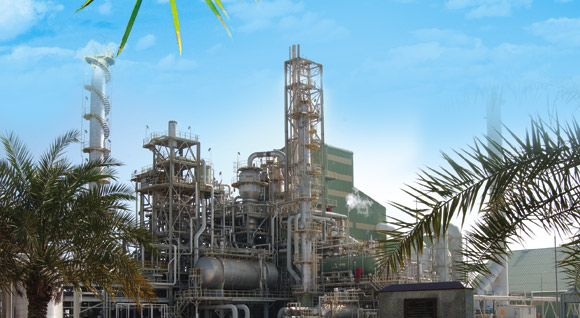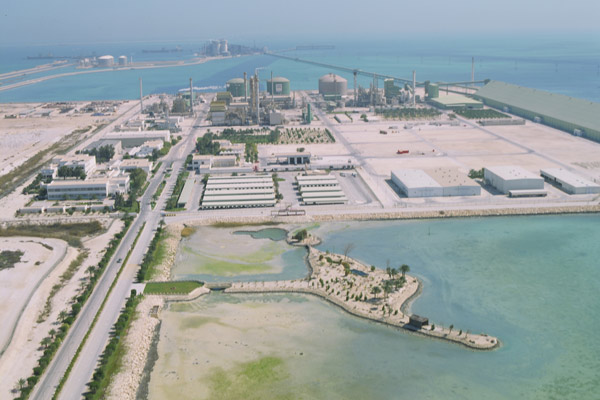Gulf Petrochemical Industries: Fertilizer Production in Bahrain
Bahrain Sector Analysis
Bahrain Petrochemicals Industry: Forming of the Leading Company in Fertilizer and Petrochemical Production
“The fertilizer industry plays a major role in the future of the planet. Few people realize that the fertilizer industry is responsible for feeding up to 70% of the world’s population.”
More Stories:

Gulf Petrochemical Industries Company (GPIC)
The story of petrochemicals in Bahrain begins in December 1979 with a joint agreement entered into by three Gulf states—Bahrain, Kuwait, and Saudi Arabia—to cooperate in the manufacture of fertilizers and petrochemicals by utilizing Bahrain natural gas supplies.
“The fertilizer industry plays a major role in the future of the planet”
Under the agreement, a new company, Gulf Petrochemical Industries Company (GPIC), was to be formed as a joint venture equally owned by the government of the Kingdom of Bahrain; Saudi Basic Industries Corporation (SABIC) representing Saudi Arabia; and Petrochemical Industries Company (PIC) representing Kuwait. GPIC’s board of directors is composed of an equal number of directors chosen by these three owners.
A site was chosen on 60 acr es of reclaimed land on Sitra Island in Bahrain, on which two plants were to be built, one to produce ammonia, and a second to produce methanol. 
These two plants were completed and commissioned in May 1985, each with a capacity to produce 1,000 metric tons per day. In 1989, these plants were enlarged to produce 1,200 metric tons per day. In 1998, a third plant was completed to produce 1,700 metric tons of urea per day.
GPIC is one of eight major petrochemical producers in the Gulf Region, and although it is the smallest country in the Arabian Gulf region, it has continued to play a pioneering role.
GPIC specializes in three primary products: ammonia, methanol, and urea. Other petrochemical producers in the Gulf Region also produce petrochemicals for plastics, synthetic fibers, and various other industries. GPIC’s main market focus for its products, particularly ammonia and granular urea, is tied to the food sector.
GPIC’s Product Descriptions and Uses
Ammonia is one of the most common basic chemicals in the world and the primary compound for the production of nitrogenous fertilizer worldwide. It is primarily produced from natural gas. Ammonia is synthesised by the reaction, of hydrogen and nitrogen under high pressure in the presence of a catalyst in an Ammonia Converter.
Ammonia is used in the production of cattle feed, resins, fertilizers, explosives, textiles, refrigerants, rubber, metallurgy, drugs, photography, food/beverages, organic/inorganic, chemicals, leather, water treatment, pulp and paper, petroleum refining, aeronautical/space research, and detergents/wetting agents.
Methanol (or methyl alcohol) is also produced primarily from natural gas and involves the reaction of carbon monoxide, carbon dioxide and hydrogen over a catalyst. The consumption of carbon dioxide, a byproduct of ammonia production enhances the potential integration between these two types of plant. Methanol is used in the production of resins, polymers, plasticizers, solvents, octane improvers, fuel additives, corrosion inhibitors, methyl halides, cleaning, extraction, and antifreeze.
Urea is used in the production of fertilizers, cattle feed, and urea formaldehydes; and is the most widely employed nitrogenous fertilizer in the world, because it is a major requirement for the cultivation of rice, the staple food for more than 50% of the world’s population. Urea is produced by reacting ammonia and carbon dioxide. The resultant solution is concentrated and granulated to form a free-flowing solid bulk product that can be stored, shipped and applied by end-users worldwide.
The International Economic and Social Importance of GPIC’s Fertilizer Production
“The fertilizer industry plays a major role in the future of the planet,” says Mr. A. Rahman A.Hussain Jawahery, President of Gulf Petrochemical Industries Company (GPIC). “Few people realize that the fertilizer industry is responsible for feeding up to 70% of the world’s population. We produce, in nitrogenous fertilizer, over 125 million tons. These are used by farms in every corner of the world.”Thus, Jawahery insists, “The fertilizer industry is really the backbone of sustainability of global population and of global economy.”